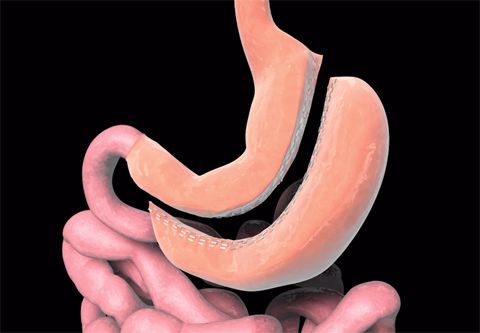Obesity has become a global health concern, leading many to explore surgical options for weight loss. Among the available procedures, sleeve gastrectomy stands out as one of the most effective and commonly performed surgeries. This guide covers everything you need to know about sleeve gastrectomy, including its benefits, risks, recovery process, and how to maintain long-term weight loss success.
What is Sleeve Gastrectomy?
Sleeve gastrectomy is a type of bariatric surgery where approximately 75-80% of the stomach is removed, leaving a smaller, tube-shaped stomach or “sleeve.” This reduced stomach size limits food intake and helps people feel full sooner. Unlike gastric bypass, sleeve gastrectomy does not involve rerouting the intestines, making it less complex but highly effective.
How Sleeve Gastrectomy Works
The procedure is performed laparoscopically, involving small incisions and a camera for precise surgery. By removing a significant portion of the stomach, the surgery not only reduces the amount of food you can consume but also lowers the production of ghrelin, the hormone responsible for hunger. This dual action helps reduce appetite and promotes weight loss.
Benefits of Sleeve Gastrectomy
Sleeve gastrectomy has several advantages, including:
- Significant Weight Loss: Patients typically lose 50-70% of their excess weight within the first 12-18 months.
- Improved Health Conditions: It can help alleviate obesity-related health problems, such as type 2 diabetes, hypertension, sleep apnea, and high cholesterol.
- Minimally Invasive: The laparoscopic approach leads to smaller scars, less post-operative pain, and a shorter recovery time.
- No Intestinal Bypass: Unlike other bariatric surgeries, the digestive process remains intact, reducing the risk of malabsorption and nutrient deficiencies.
Risks and Considerations
While sleeve gastrectomy is generally safe, it is not without risks. Potential complications include:
- Staple Line Leaks: Rare but serious, leaks can occur along the staple line, leading to infections or other issues.
- Nutrient Deficiencies: Although less likely compared to gastric bypass, there is still a risk of developing deficiencies in vitamins and minerals.
- Gastroesophageal Reflux: Some patients may experience increased acid reflux post-surgery.
- Weight Regain: If dietary and lifestyle guidelines are not followed, patients may regain some of the lost weight over time.
Who is a Candidate for Sleeve Gastrectomy?
Ideal candidates for sleeve gastrectomy typically meet the following criteria:
- Body Mass Index (BMI): A BMI of 40 or higher, or a BMI of 35-39.9 with obesity-related health conditions.
- Previous Weight Loss Attempts: Demonstrated efforts through diet, exercise, or medication that have not been successful.
- Readiness for Lifestyle Changes: A commitment to lifelong dietary changes, exercise, and medical follow-ups.
Preparing for the Surgery
Preparation involves a thorough medical evaluation, nutritional counseling, and sometimes psychological assessments. Doctors often recommend a pre-surgery diet to shrink the liver and reduce complications. This diet usually consists of high-protein, low-carbohydrate meals and adequate hydration.
The Surgery Day
Sleeve gastrectomy typically takes 1-2 hours and is performed under general anesthesia. Patients are monitored in the hospital for 1-3 days post-surgery to ensure no immediate complications arise.
Recovery Process
Recovery from sleeve gastrectomy involves several key phases:
- Immediate Post-Surgery: Patients may experience pain, nausea, and fatigue. Clear liquids are introduced first, followed by protein shakes and soft foods.
- First Few Weeks: Gradual transition to soft, pureed foods. Hydration and protein intake are prioritized.
- 6-8 Weeks Post-Surgery: Patients can start incorporating more solid foods, following strict portion guidelines to avoid stretching the stomach.
- Long-Term: Lifelong dietary habits focusing on protein, vegetables, and portion control are essential to maintain weight loss. Regular exercise and follow-ups with healthcare providers are also crucial.
Tips for Long-Term Success
- Follow Dietary Guidelines: Maintain a diet rich in lean protein, vegetables, and whole grains. Avoid sugary and high-fat foods.
- Stay Hydrated: Drink water throughout the day but avoid drinking with meals to prevent feeling overly full.
- Exercise Regularly: Aim for at least 150 minutes of moderate exercise per week.
- Take Supplements: Ensure adequate intake of vitamins and minerals as advised by your doctor.
- Attend Follow-Up Appointments: Regular medical check-ins help monitor progress and address any concerns early.
Common Myths About Sleeve Gastrectomy
Myth 1: You Won’t Need to Watch Your Diet Post-Surgery
Fact: While sleeve gastrectomy limits food intake, healthy eating is vital for maintaining weight loss.
Myth 2: It’s the Easy Way Out
Fact: Sleeve gastrectomy is a tool, not a quick fix. Success requires dedication to lifestyle changes.
Myth 3: Weight Loss Stops After One Year
Fact: While rapid weight loss typically occurs in the first 12-18 months, continued efforts can lead to further weight loss or maintenance.
Why Choose Turkey for Sleeve Gastrectomy?
Turkey has become a leading destination for bariatric surgery due to several key advantages:
Affordable Surgery Costs
The cost of sleeve gastrectomy in Turkey is 60-70% lower than in countries like the United States, the UK, or Australia. Patients can expect to pay between $2,500 and $5,500, depending on the health institution and package.
Highly Skilled Surgeons
Many bariatric surgeons in Turkey are internationally trained and have extensive experience in performing gastric sleeve surgeries. They are often members of organizations such as the International Federation for the Surgery of Obesity (IFSO).
Modern Hospitals and Health institutions
Turkish health institutions and hospitals meet international healthcare standards and are equipped with state-of-the-art medical technology. Many offer multilingual staff and comprehensive care packages for international patients.
Conclusion
Sleeve gastrectomy is an effective weight loss solution for those struggling with severe obesity. It offers significant benefits, including substantial weight loss and improved health conditions. However, it requires a commitment to lifelong changes. Understanding the risks, benefits, and post-surgery care can help you make an informed decision and achieve long-term success.




